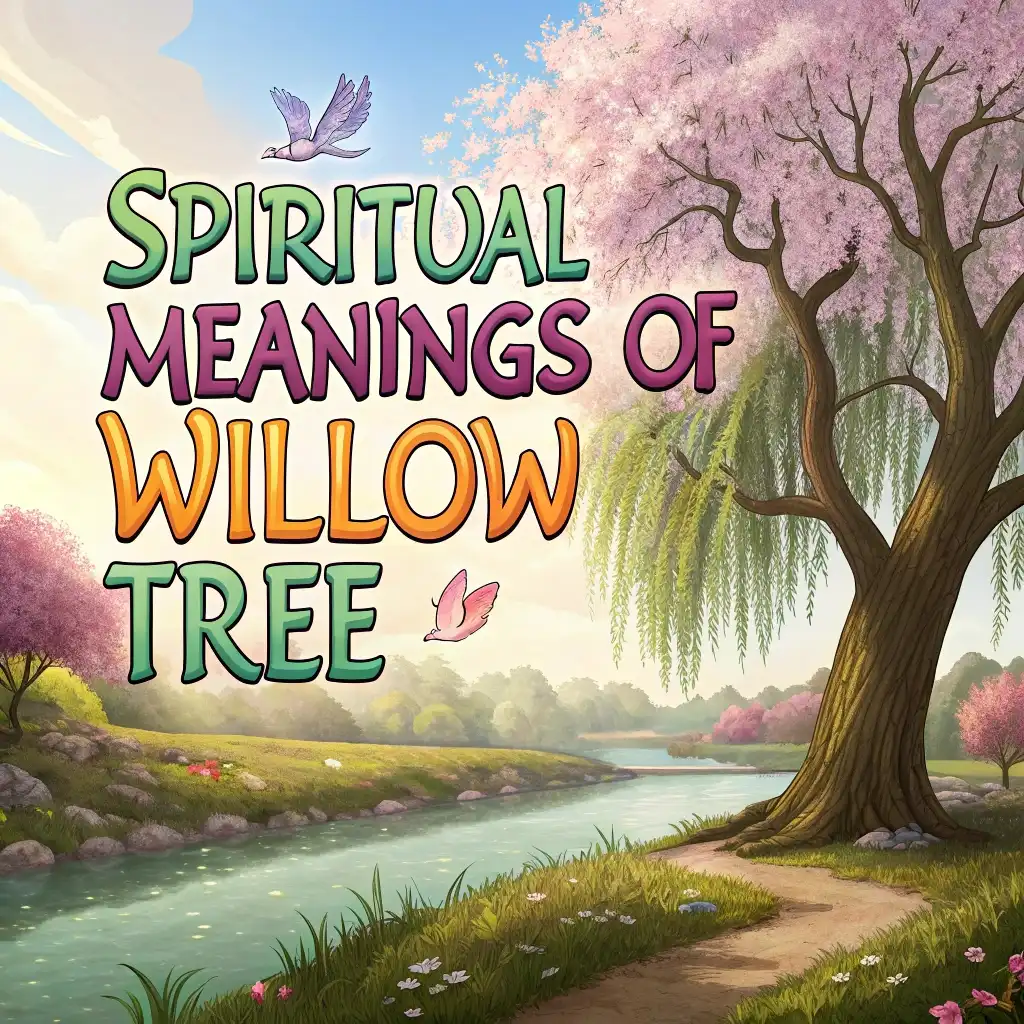Have you ever stood under a willow tree and felt its calming presence? The willow tree is more than just a plant with long, graceful branches.
It carries deep spiritual meanings that connect us to nature, history, and our own emotions. This blog post will explore the many ways the willow tree inspires peace, healing, and growth.
Whether you’re curious about trees or looking for a deeper connection to the world around you, this guide will show you why the willow tree is so special. Keep reading to uncover the secrets of this magical tree!
Key Takeaways
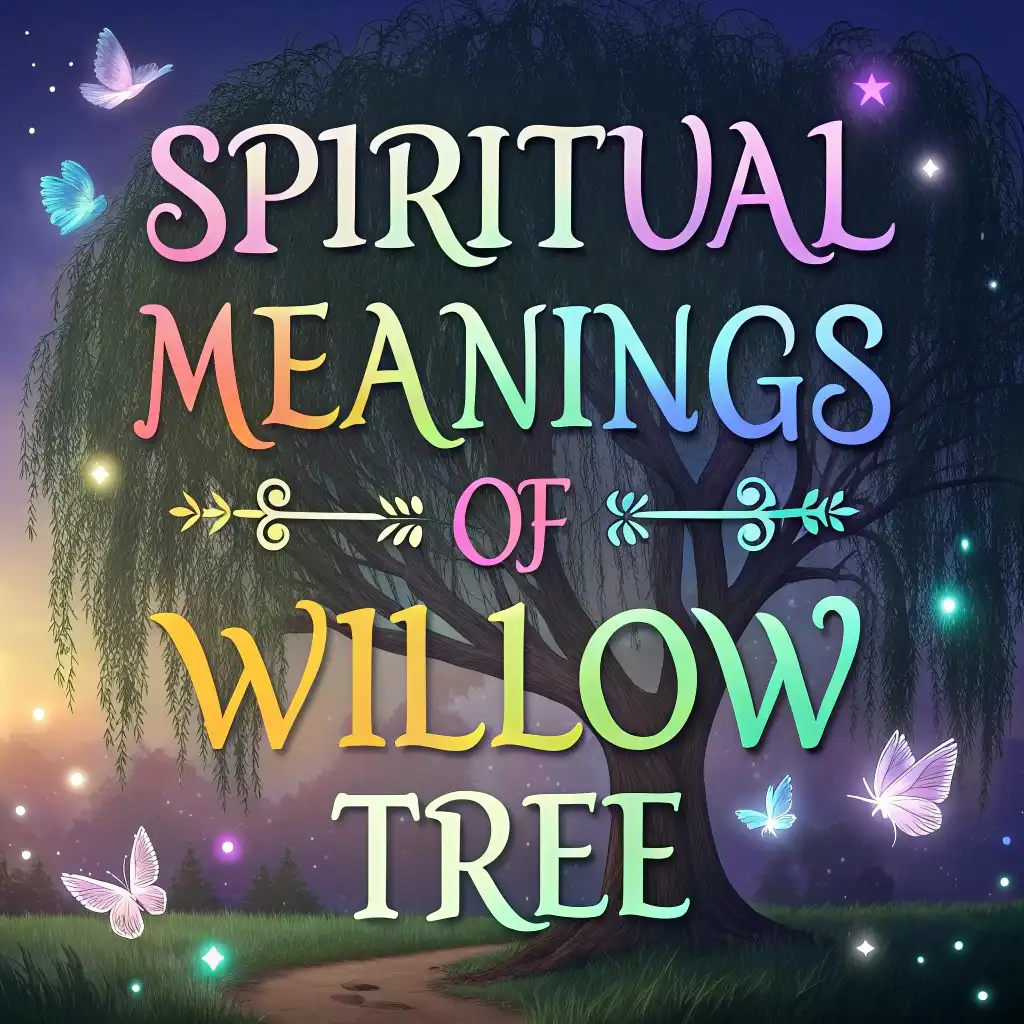
- Symbol of Flexibility: The willow tree teaches us how to adapt to life’s challenges without breaking. Its branches bend but rarely snap, showing us the power of resilience.
- Connection to Emotions: Many cultures believe the willow tree helps people express their feelings and heal emotional wounds. It’s like a friend who listens when you’re sad.
- Healing Energy: People have used willow bark for centuries to make medicine. This shows the tree’s role in physical and spiritual healing.
- Growth and Renewal: The willow tree grows quickly and thrives near water. This makes it a symbol of new beginnings and personal growth.
- Mystery and Magic: In folklore, the willow tree is often linked to mystical powers and dreams. Some say it can help you connect with your inner self.
- Protection and Guidance: Many traditions see the willow as a protector. Its presence is believed to guard against negative energy.
- Cultural Importance: From ancient myths to modern stories, the willow tree has inspired art, literature, and spiritual practices worldwide.
- Nature’s Teacher: The willow reminds us to stay grounded while reaching for our dreams. It’s a lesson in balance we can all learn from.
What Does the Willow Tree Symbolize?
The willow tree is full of meaning. It stands for flexibility, healing, and renewal. Its long, drooping branches remind us to let go of things that weigh us down. When storms come, the willow bends instead of breaking. This teaches us to handle tough times with grace.
In many cultures, the willow is seen as a bridge between worlds. It connects the earth and sky, the past and present. People often plant willows near graves because they believe the tree helps souls find peace.
The willow also represents water, which is essential for life. Since it grows near rivers and lakes, it reminds us of the flow of time and emotions.
Ancient Greeks associated the willow with grief and mourning. But they also saw it as a sign of hope. Even today, the tree inspires artists and writers.
Its beauty and strength speak to everyone in different ways. By learning what the willow symbolizes, we can better understand ourselves and the world around us.
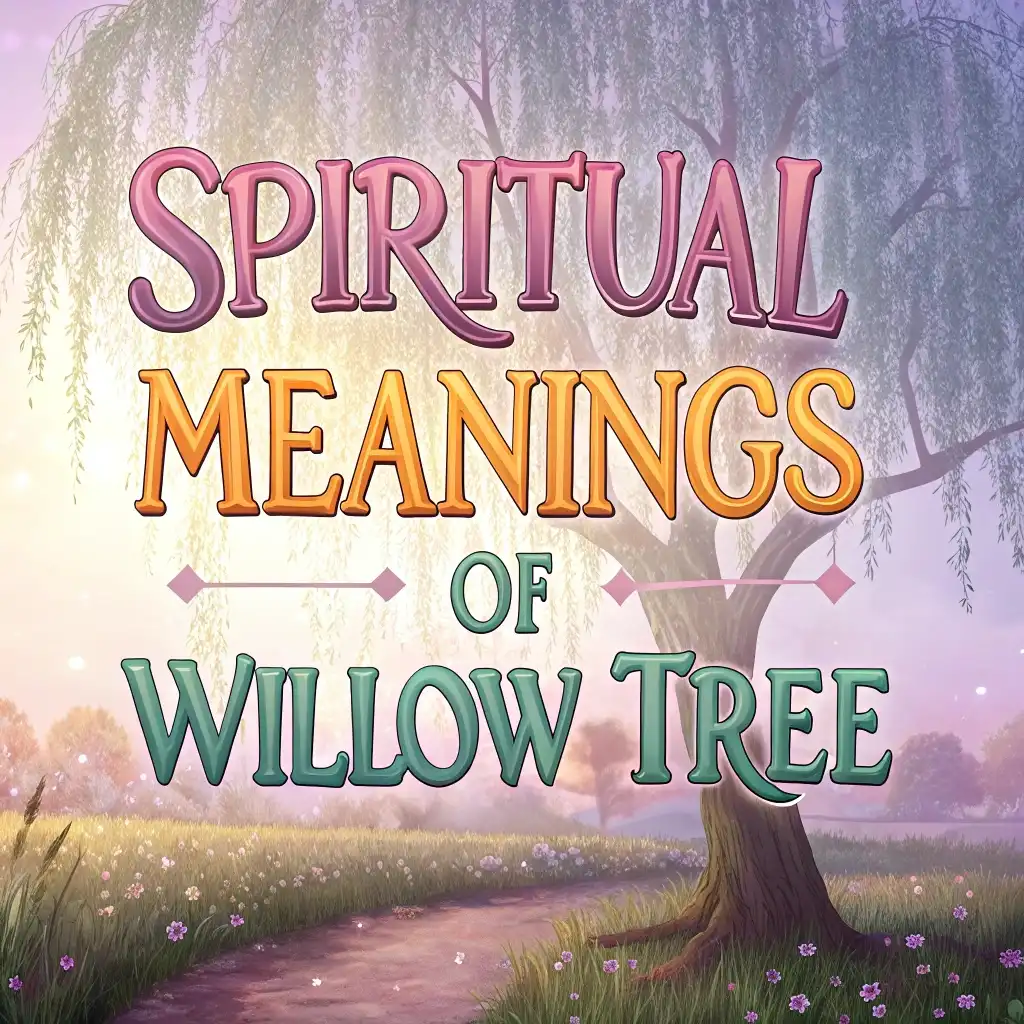
The Willow Tree and Emotional Healing
The willow tree has a unique ability to comfort those who feel lost or hurt. Its gentle appearance seems to whisper, “It’s okay to feel this way.” Many people turn to the willow during hard times because it feels like a safe space. Sitting under its branches can calm your mind and heart.
Willow bark contains salicin, a natural pain reliever. For centuries, people have used it to treat headaches and other ailments. This shows how the tree cares for both body and soul.
On an emotional level, the willow encourages us to face our feelings instead of hiding them. It reminds us that tears are healthy and cleansing.
If you’re feeling overwhelmed, try spending time near a willow tree. Imagine its roots grounding you and its leaves brushing away your worries.
You might be surprised at how much lighter you feel afterward. The willow doesn’t judge—it simply supports you on your journey.
Why Is the Willow Tree Linked to Water?
Water plays a big role in the willow tree’s story. These trees love growing near rivers, ponds, and streams. Their roots drink deeply from the soil, keeping them strong even in wet conditions.
Because of this close relationship with water, the willow has become a symbol of flow and movement.
Water is life-giving, and so is the willow. Together, they represent change and adaptability.
Just as water moves around obstacles, the willow teaches us to adjust to life’s twists and turns. This connection makes the tree a powerful guide for anyone seeking balance.
Think about how water reflects the sky. In the same way, the willow reflects our inner thoughts and feelings.
If you want to grow emotionally or spiritually, look to the willow for guidance. Its bond with water reminds us to stay fluid and open to new experiences.
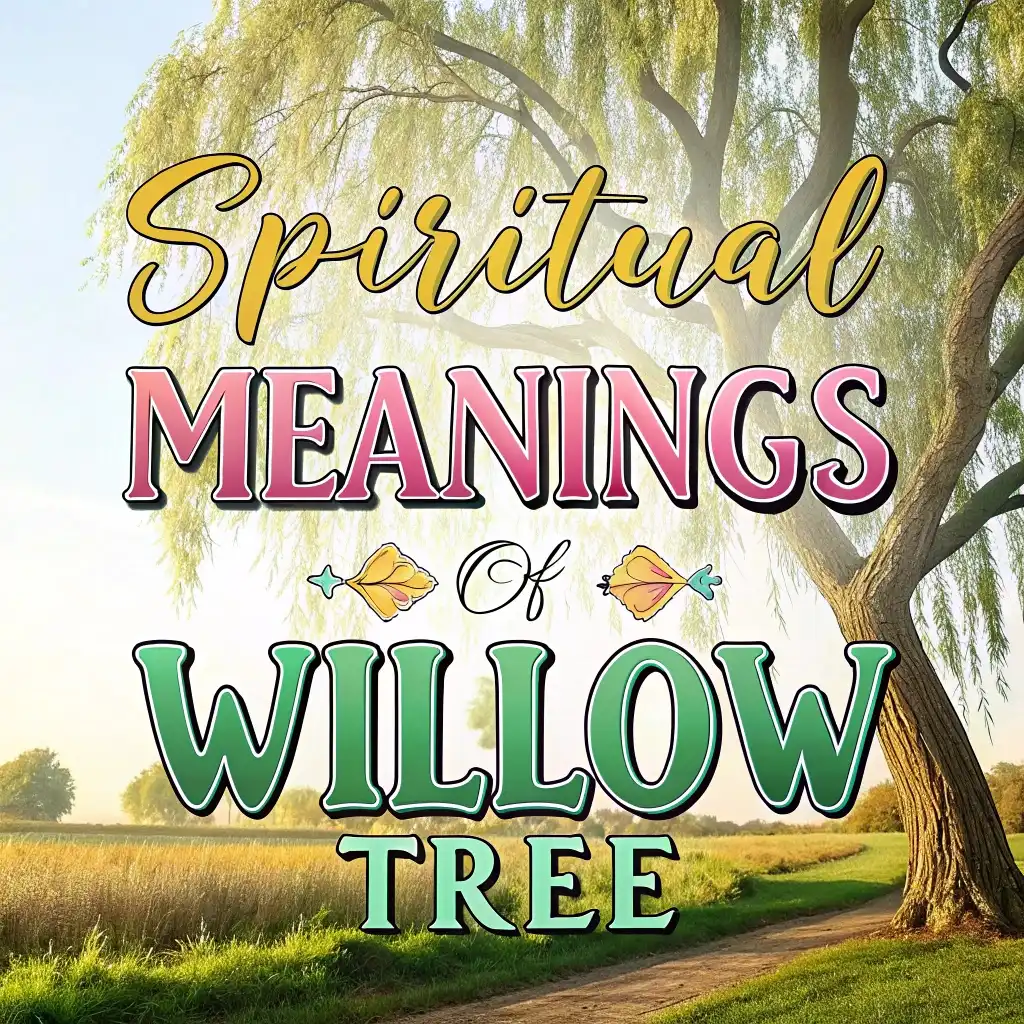
The Willow Tree in Folklore and Myths
Stories about the willow tree appear in myths from all over the world. In Celtic legends, the willow was sacred to poets and storytellers. They believed the tree could inspire creativity and wisdom. Druids often held ceremonies under willows to honor the moon and stars.
Native American tribes viewed the willow as a healer. They made tea from its bark to cure fevers and aches. Some tribes even thought the tree could bring rain during droughts. This belief highlights the willow’s nurturing spirit.
In Chinese culture, the willow is tied to immortality. Artists often paint willows in landscapes to show harmony between humans and nature. These paintings remind viewers to live in peace with the world around them.
No matter where you go, the willow tree appears as a wise and magical figure. Its stories teach lessons about courage, love, and transformation. Next time you hear a tale about a willow, pay attention—it might hold a message just for you.
How the Willow Tree Inspires Growth and Renewal
The willow tree grows fast and strong. Even if you cut it down, it can sprout new shoots from its roots. This amazing ability makes the willow a perfect symbol of growth and renewal. It shows us that no matter what happens, we can always start fresh.
Springtime is especially magical for willows. Their bright green leaves burst forth after winter, signaling new beginnings. Watching this process can inspire you to set goals or try something new. Like the willow, you have the power to bloom again.
To embrace this energy, spend time outdoors during spring. Notice how plants wake up from their slumber.
Let the willow’s example motivate you to chase your dreams. Remember, growth takes time, but every step counts. With patience and effort, you’ll see beautiful results.
The Mystical Powers of the Willow Tree
Some people think the willow tree holds mystical powers. They believe it can enhance intuition and unlock hidden knowledge.
Shamans and healers sometimes use willow branches in rituals to connect with spirits. Others carry pieces of willow wood as charms for protection.
Dreams play a big part in the willow’s magic. Sleeping under a willow tree is said to bring vivid dreams filled with insight.
These dreams may reveal truths about yourself or guide you toward solutions. If you struggle with decision-making, the willow might help clarify your thoughts.
Even if you don’t believe in magic, there’s no denying the willow’s charm. Its graceful shape and soothing presence make it feel otherworldly. Whether you seek answers or simply enjoy its beauty, the willow invites you to explore the mysteries of life.
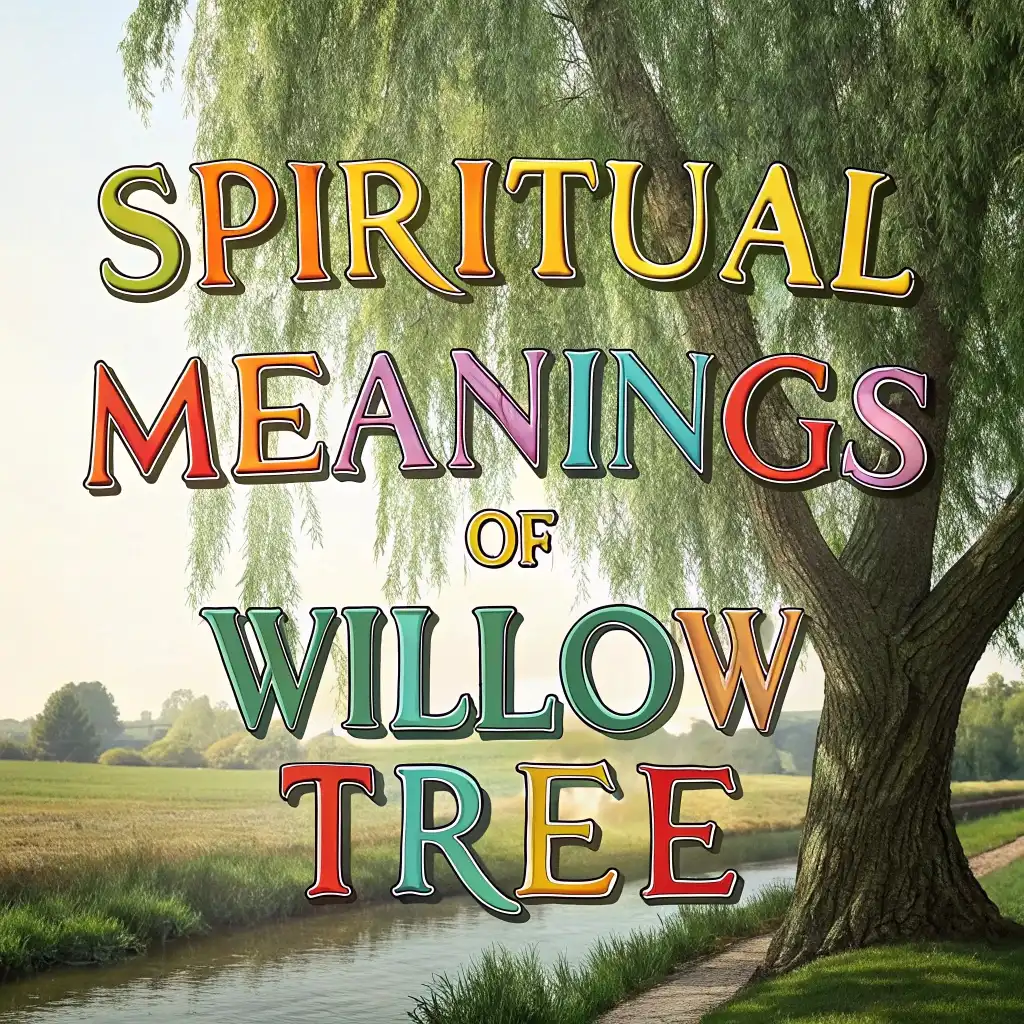
The Willow Tree as a Symbol of Protection
The willow tree isn’t just about beauty and flexibility—it also serves as a powerful symbol of protection. In many traditions, people believe that the willow can shield them from negative energy or harmful influences.
Its dense branches create a natural canopy, offering shelter not only to birds and animals but also to those seeking refuge from life’s storms.
In some cultures, planting a willow tree near your home is thought to ward off bad luck or evil spirits. The tree’s presence acts like a guardian, watching over the people and land around it.
Imagine standing under its drooping branches during a thunderstorm—the willow seems to absorb the chaos, leaving you feeling safe and calm.
Even today, modern spiritual practices embrace the protective qualities of the willow. Some people hang dried willow branches above doorways or carry small pieces in their pockets for good luck.
Whether you believe in its mystical powers or simply appreciate its comforting aura, the willow reminds us that we are never truly alone. It stands tall, quietly protecting all who come near.
Lessons on Resilience from the Willow Tree
One of the most inspiring traits of the willow tree is its resilience. When strong winds blow or heavy rains fall, the willow doesn’t resist—it bends. This simple act of yielding allows it to survive harsh conditions without snapping.
Nature teaches us through the willow that strength isn’t always about standing firm; sometimes, it’s about knowing when to give.
This lesson applies to our lives too. We all face challenges—whether it’s schoolwork, friendships, or family issues—and the willow shows us how to handle them gracefully.
Instead of fighting every problem head-on, we can learn to adapt and find creative solutions.
For example, if you’re struggling with a tough math problem, take a break and return to it later with fresh eyes. Like the willow, you’ll discover that flexibility often leads to success.
Next time you see a willow swaying in the breeze, think about how it handles stress. Let it remind you that being flexible doesn’t mean giving up—it means finding smarter ways to thrive.
The Role of the Willow Tree in Art and Literature
Artists and writers have long been captivated by the willow tree’s elegance and symbolism. From ancient paintings to modern poetry, the willow appears as a muse for creativity. Its sweeping branches and shimmering leaves evoke feelings of mystery, nostalgia, and wonder.
In Japanese art, the willow is a common motif in traditional woodblock prints. These artworks often depict the tree alongside flowing rivers or serene landscapes, emphasizing its connection to water and tranquility.
Similarly, poets throughout history have used the willow as a metaphor for love, loss, and renewal. One famous example is the phrase “weeping willow,” which captures the tree’s association with sadness and healing.
Even in children’s stories, the willow plays a role. Picture books frequently feature friendly willows that offer shade, shelter, or wisdom to characters.
These tales highlight the tree’s nurturing nature and ability to bring comfort. Whether you’re reading a novel or admiring a painting, the willow invites you to pause and reflect on its deeper meanings.
How to Incorporate Willow Energy into Your Life
If you’re drawn to the spiritual meanings of the willow tree, there are many ways to bring its energy into your daily routine. Start by spending more time outdoors, especially near bodies of water where willows naturally grow. Simply sitting beneath a willow can help you feel grounded and at peace.
You can also decorate your space with reminders of the willow. Hang artwork featuring the tree, place dried willow branches in a vase, or wear jewelry made from willow wood.
These small touches keep its calming influence close to you. For an extra boost, try journaling about what the willow represents to you personally.
Another idea is to practice mindfulness exercises inspired by the willow. Close your eyes and imagine yourself as a willow tree.
Feel your roots digging deep into the earth while your branches sway gently in the wind. This visualization helps you stay flexible and centered, no matter what life throws your way.
By incorporating these practices, you’ll deepen your connection to the willow’s wisdom and let its energy guide you toward growth and healing.
FAQs
What does the willow tree mean spiritually?
The willow tree symbolizes flexibility, healing, and renewal. It reminds us to adapt to challenges and embrace change.
Why is the willow tree associated with water?
Willows thrive near water sources, making them symbols of flow, emotion, and adaptability.
Can the willow tree help with emotional healing?
Yes! The willow encourages us to process our feelings and find peace within ourselves.
Are there any myths about the willow tree?
Many cultures tell stories about the willow. For example, Celts saw it as a source of inspiration, while Native Americans valued it as a healer.
How can I connect with the energy of the willow tree?
Spend time near a willow, meditate under its branches, or keep a piece of willow wood as a reminder of its wisdom.

Hello, I’m Zephyra, your guide at SpiritualityEssence.com. I’m passionate about uncovering life’s mysteries and sharing transformative insights. Let’s explore mindfulness, ancient rituals, and the path to a more awakened life together. Join me on this spiritual journey!

